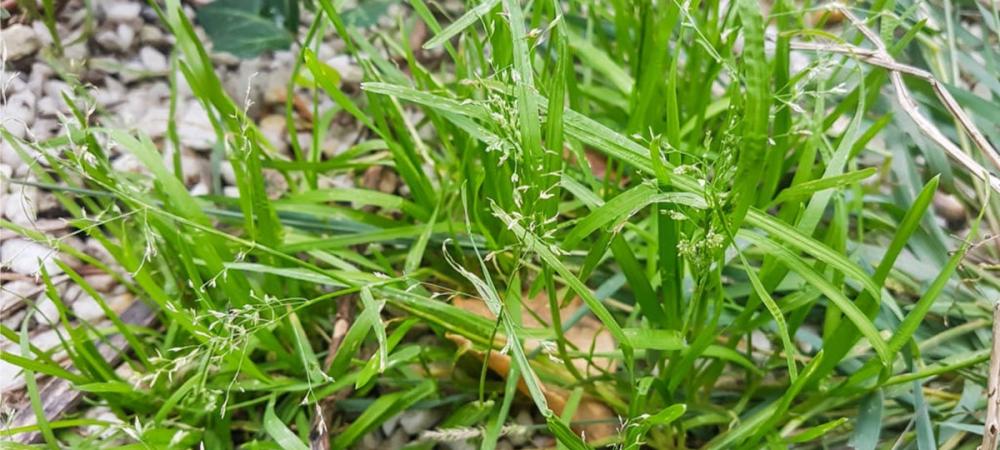Do You Have Poa Annua In Your Lawn?

Many homeowners have heard the words Poa Annua, and if you haven't it's something you should be concerned about in regards to your lawn. In this article we're going to breakdown, what is Poa Annua, should you be worried about it, is it common in North Carolina, and how you should handle it to protect your lawn!
What Is Poa Annua?
Poa annua is a type of grass that is commonly found in cool, temperate climates. It is known for its rapid germination and growth, and is often used for turf and forage. It can also be considered as a weed in some places because it can rapidly take over existing grass, and can actually damage your lawn as it battles for resources.
It's often considered one of the most difficult to control grassy weeds because of its ability to rapidly reproduce and fight for resources. Along with this, although it's mostly found in cooler and moderate climates, Poa Annua is very temperature resistant and can survive in a wide variety of climates as well.
Is Poa Annua Found In North Carolina?:
Yes, Poa annua is a common cool-season grass species that is found in many parts of the world, including North Carolina. It can be found in a variety of habitats, including lawns, turf, gardens, and pastures. It is often considered a weed in turfgrass and golf course settings because it can outcompete desirable turfgrass species and create uneven playing surfaces. It is also known for its rapid germination and growth, which can make it difficult to control.
North Carolina falls within the climate range where Poa annua is known to thrive, that is cool and temperate. However, the presence of Poa annua can vary depending on the specific location and conditions within the state. It's best to consult with local experts or conduct a survey to confirm the presence of Poa annua in a specific area.
When Is Poa Annua Active?
Poa annua is active throughout the growing season, which can vary depending on the location and climate. In general, Poa annua is a cool-season grass, which means it is most active during the cooler months of the year, typically from fall to early spring. In places with milder climates, Poa annua can continue to grow and be active throughout the year. Take a look at when to grow grass seed in NC for types of desireable grasses!
It germinates and grows rapidly in the fall and early spring, and it can continue to grow during the winter when the temperature is not too low. It can also continue to grow during the summer when the temperature is not too high, and when there is enough moisture.
In general, Poa annua can be most active during the fall and spring seasons, but it can also be active during the summer and winter months depending on the temperature and moisture conditions.
How Do I Identify Poa Annua?
There are several characteristics you can use to identify Poa annua:
- Leaves: Poa annua has narrow, smooth leaves that are typically less than 1/8 inch wide. The leaves are typically a bright green color and have a glossy appearance.
- Stems: Poa annua has thin, smooth stems that are typically less than 1/8 inch wide. The stems are typically a light green color and are somewhat flattened in shape.
- Flowers: Poa annua produces small, inconspicuous flowers that are typically light blue or white in color. The flowers are typically arranged in clusters at the top of the stem.
- Seedheads: Poa annua produces seedheads that are typically less than 1 inch long. The seedheads are typically a light brown color and have a slightly flattened shape.
- Habitat: Poa annua can be found in a variety of habitats, but it typically prefers well-drained soils and is often found in areas that are exposed to full sun.
- Growth: Poa annua is a low-growing grass that typically forms a dense mat of foliage. It can quickly spread and germinate, and it can outcompete other grasses for resources.
It's important to note that some grasses can be difficult to identify and may require the consultation of an expert. Additionally, some characteristics may vary depending on the location, weather conditions, and other factors.
When Does Poa Annua Germinate?
Poa annua typically germinates in the fall or early winter when soil temperatures range between 50-65°F (10-18°C). In some regions, it may also germinate in the spring when soil temperatures rise above this range.
However, it's important to note that germination can also be influenced by other factors such as soil moisture, light, and seed quality. In general, Poa annua seeds require consistent moisture and good seed-to-soil contact to germinate successfully.
Final Thoughts On Poa Annua In North Carolina:
If you are worried about Poa Annua taking over your lawn you should consider hiring a professional. If you are interested in Lawn Care In Raleigh our experts are ready to give you a free inspection of your lawn and help you identify Poa Annua!
Resources:
